30 Best Children’s Picture Native American Books About Families & Cultures
This post may contain affiliate links.
Children often learn about indigenous cultures from history, but it’s just as important to know that Native American Indian cultures are still alive and strong in the modern-day, too. That’s why I love reading these children’s picture Native American books with indigenous representation.
Picture books like these show Native North American and Native Canadian cultures incorporating tradition, culture, and language in the present day.
Read these books about the original inhabitants of North America to learn how you can appreciate and understand the richness of so many different First Nations and American Indian cultures.
Incidentally, American Indian / Native American Heritage Month falls in November with National (U.S.) Indigenous Peoples’ Day is celebrated the day after Thanksgiving in the U.S. and late June for Canada.
As I find more books, I’ll add them to this list.
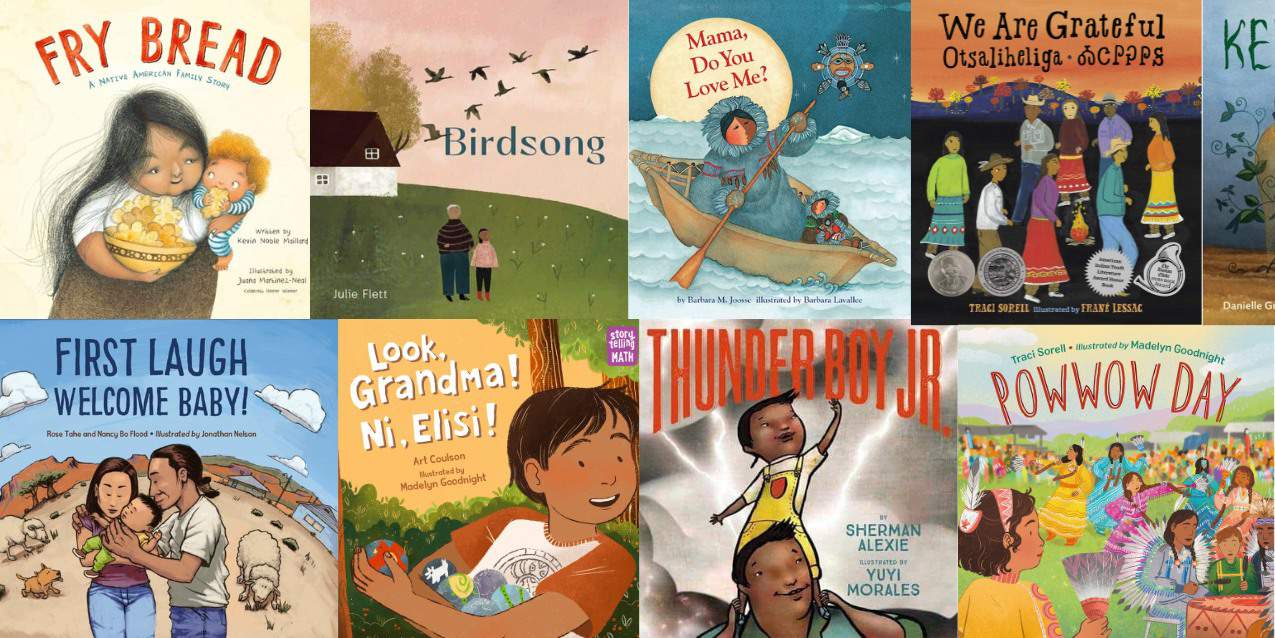
Please comment if you have recommendations!
If you’re looking for the best middle grade and YA books with Indigenous main characters, go here.
Children’s Native American Books About Indigenous Families and Cultures
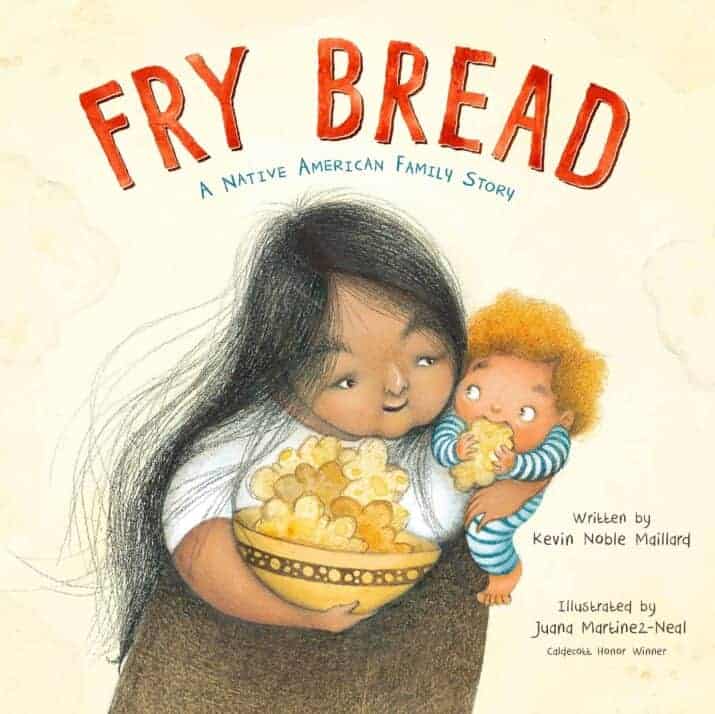
Fry Bread: A Native American Family Story by Kevin Noble Maillard, illustrated by Juana Martinez-Neal
This beautifully written gem celebrates Native American culture through the lens of the food Fry Bread. The repetitive text starts each two-page spread, “Fry bread is…” then descriptive, lyrical verse follows each statement, elaborating on the meaning. “Fry bread is sound / The skillet clangs on the stove / The fire blazes from below / Drop the dough in the skillet / The bubbles sizzle and pop.” This rich text paired with evocative illustrations culminates in a wonderful book that will show children Native American traditions of family, food, and love.

First Laugh Welcome, Baby! by Rose Ann Tahe and Nancy Bo Flood, illustrated by Jonathan Nelson
NAVAJO
This beloved new baby is warmly welcomed by all his family members both in the city and on the reservation. Big sister cooks blue cornmeal mush. Nima weaves a tree-of-life rug. Papa tick-tickles baby’s tummy. As each person spends time with this cerished baby, they all try to make him laugh. Because when a baby laughts for the first time, it’s an important moment and subsequent ceremony for welcoming a new Navajo baby into the clan. Beautiful illustrations with evocative, sensory language captures this loving family’s culture and traditions.
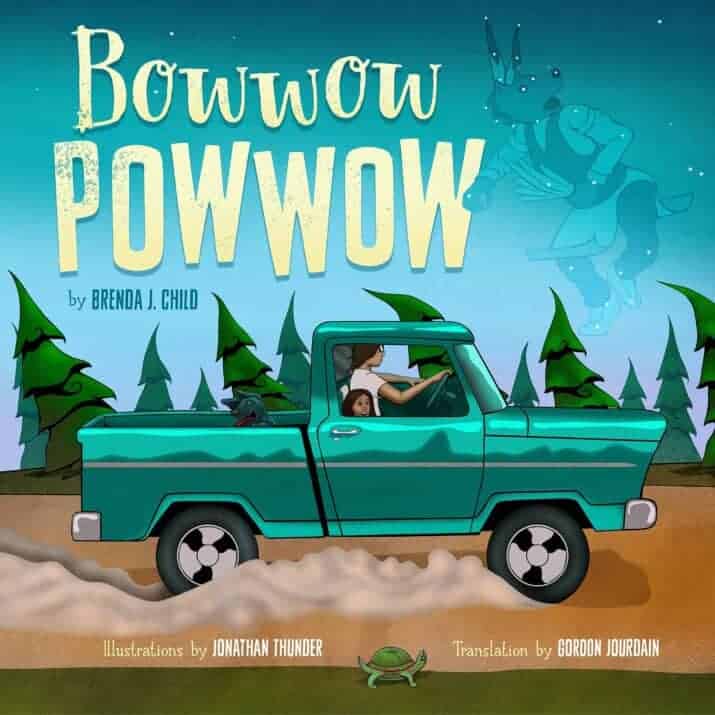
Bowwow Powwow by Brenda J. Child, illustrated by Jonathan Thunder, translated by Gordon Jourdain
ANISHINAABE
Windy Girl and Itchy Boy’s uncle shares stories with them as they all drive to the powwow where it’s a time for gratitude and family, singing and dancing. Windy falls asleep and dreams about powwows from the past — with dogs representing people. When she wakes, she notices the influences of history on the powwows of today. It’s a dual language story that is also written in the Ojibwe language. I love the illustrations!
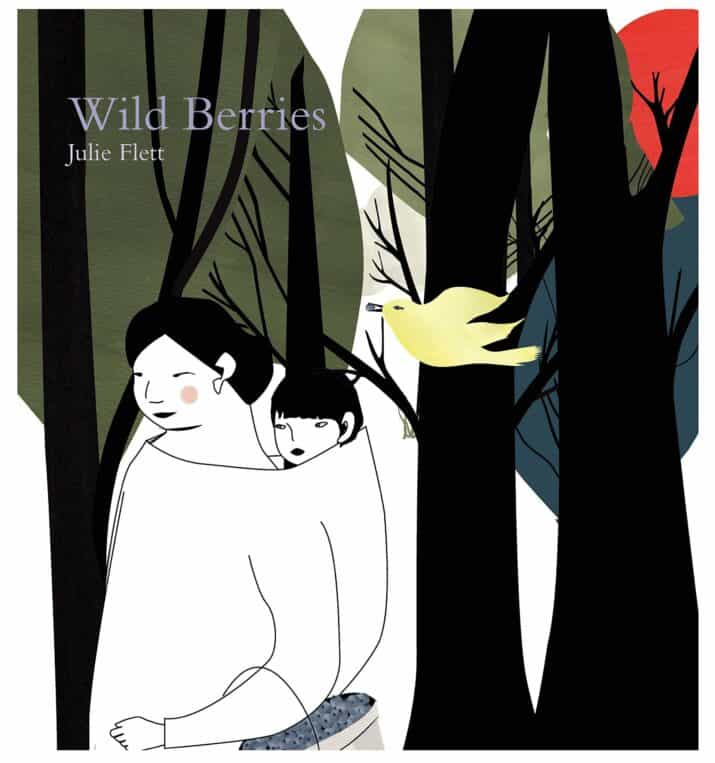
Wild Berries by Julie Flett
CREE
Grandma and Clarence have a tradition of picking berries together. “Grandma likes sweet / blueberries / ininimina, / soft blueberries, juicy blueberries. Clarence likes big blueberries, sour blueberries, blueberries that go POP in his mouth.” In nature, the two notice many things — an ant that tickles up Clarence’s leg, a fox, a spider, and birds. Many Cree words, part of the Algonquiana language family, are included throughout this sweet slice-of-life story about a grandma and boy. I love the simplicity of the text as well as the many sound words that give this book a sensory atmosphere.
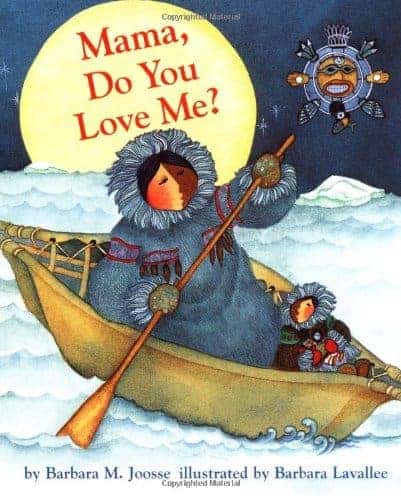
Mama, Do You Love Me? by Barbara M. Joosse, illustrated by Barbara Lavalle
A mama reassures her daughter that she loves her no matter what, no matter if she gets scared, sad, or angry because the mama will always adore her child “more than a dog loves his tail, more than a whale loves his spout.” It’s wonderful how this book depicts an Inuit mother and child in illustrations that reflect the beauty of the area and culture. Beautiful!

Finding My Dance by Ria Thundercloud, illustrated by Kalila J. Fuller
HO-CHUNK, SANDIA PUEBLO
Ria loves dancing — and starts dancing as a child in a powwow. As her love of dancing grows, she learns different styles and becomes a professional dancer, and travels all over the world.

Forever Cousins by Laurel Goodluck, illustrated by Jonathan Nelson
When one cousin moves away from the rez, when they reunite, the girls wonder if they’ll still be as close. They are happy to discover that they’ll always be connected, even if they don’t see each other every day. Very sweet.
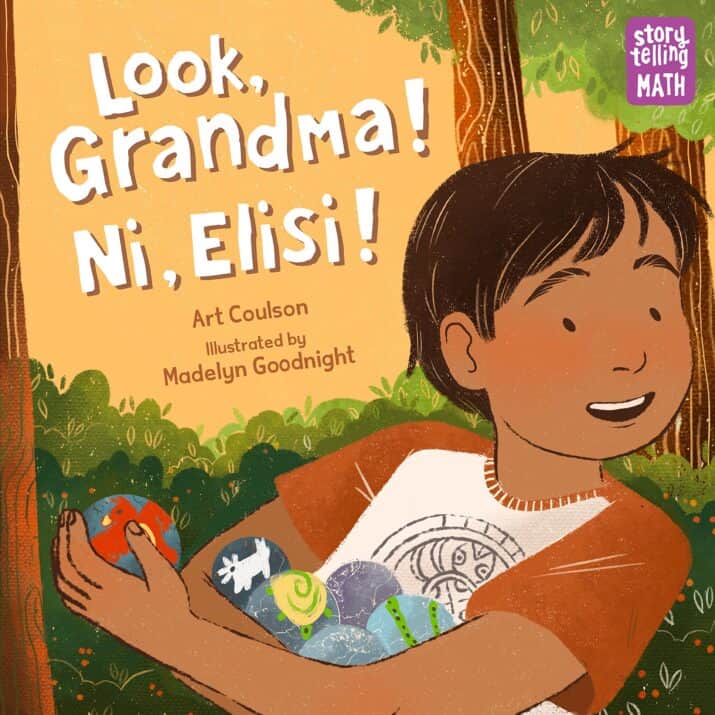
Look, Grandma! Ni, Elisi! by Art Coulson, illustrated by Madelyn Goodnight
CHEROKEE
Uncle Ben says that Ben can help sell at their booth for Cherokee national holiday. He’s excited but needs a container to fit the marbles he’s decorated. They don’t fit in a pot, a shoebox is too small, the tackle box is small, and a tray is too big. His grandma says he needs a container that takes up less space and holds the marbles. Finally after discouragement and looking everywhere, Ben uses a special basket that held his fossils. Ben explores volume, capacity, and area in a story about Cherokee culture (marbles being an ancient traditional game) and persistence.

Thunder Boy by Sherman Alexie, illustrated by Yuyi Morales
Thunder Boy wants a name all his own, not just a smaller version of his dad’s name. So he begins brainstorming the best name, all the while figuring out who he is. The story is humorous and playful while placing importance on knowing yourself.
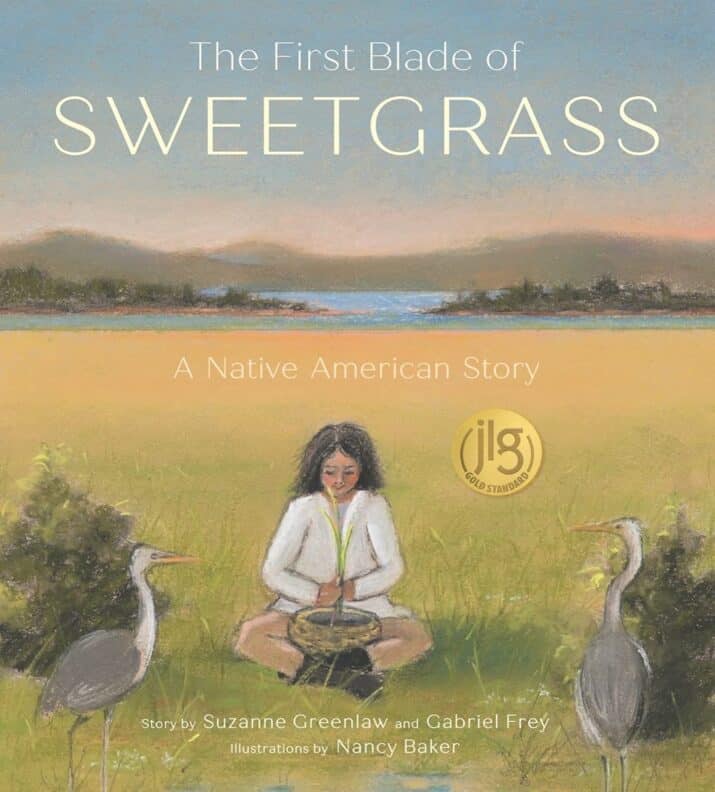
The First Blade of Sweetgrass by Suzanne Greenlaw and Gabriel Frey, illustrated by Nancy Baker
WABANAKI
It’s time for Musquon’s first harvest. Her grandmother teaches her all about sweetgrass–where it grows, how to identify it (and other grasses that are different,) and how to carefully pick it in the traditional way, leaving the first blade she sees in the ground. As Musquon searches, she learns about the importance of sweetgrass to Wabanaki culture, economy, and religion. Beautifully written, this small-moment story is about a loving familial relationship and Wabanaki culture featuring soft, earthy illustrations.
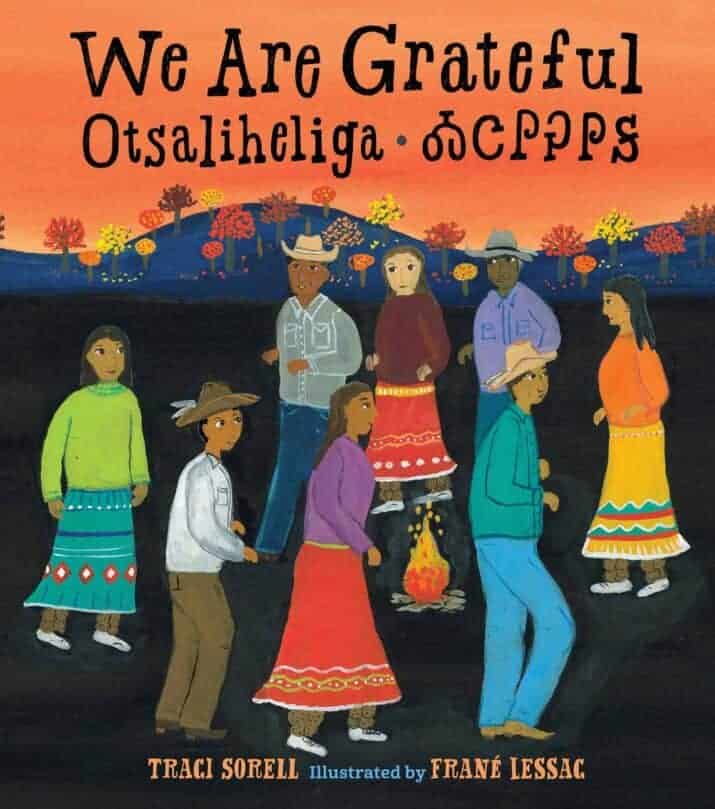
We Are Grateful Otsaliheliga by Traci Sorell, illustrated by Frane Lessac
CHEROKEE
“Cherokee people say otsaliheliga to express gratitude,” begins this celebration of the seasons, traditions, and family. As the families spend time outdoors and indoors, you’ll notice how gratitude encompasses all aspects of life from enjoying a feast for the Cherokee New Year to elder’s sharing stories to kids making corn-husk dolls to even saying goodbye to soldiers serving our country. Each season is written in English and in Cherokee. The pictures are vibrant and colorful. It’s a lovely book honoring Cherokee culture.
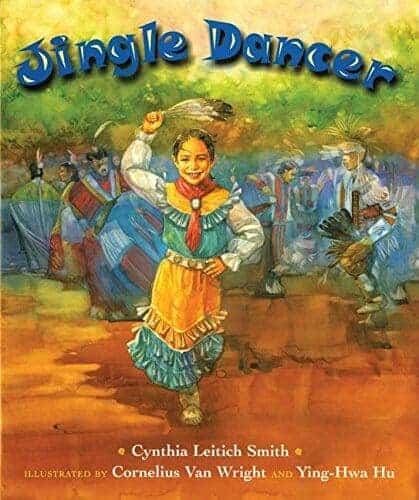
Jingle Dancer by Cynthia Leitich Smith, illustrated by Cornelius Van Wright and Ying-Hwa Hu
MUSCOGEE (CREEK) / OJIBWAY (CHIPPEWA / ANISHINABE)
I like this modern-day story about a girl named Jenna who wants to have a jingle dress and dance in the powwow just like her Grandma Wolfe. Jenna borrows rows of jingles for her Grandma and three other women dancers which, when she dances, makes her proud to continue their legacy. Readers will notice the traditional powwow dance sharing space with modern life.

Powwow Day by Traci Sorell, illustrated by Madelyn Goodnight
Because she’s recovering from an illness, River feels sad that she’s too weak to dance at the powwow. Instead of dancing, she watches, feeling tired and disappointed. But the last dance is the jingle dress and as her relatives and friends dance for ancestors, family, and health, it helps River feel her community’s love and support. River stands to watch as they come closer to where she’s sitting. She knows that she’ll join them at the next powwow. Beautiful artwork captures the tenderness of River’s emotions along with the beautiful celebration around her. Sorell’s writing invites us into this sweet, emotional story of community and healing.
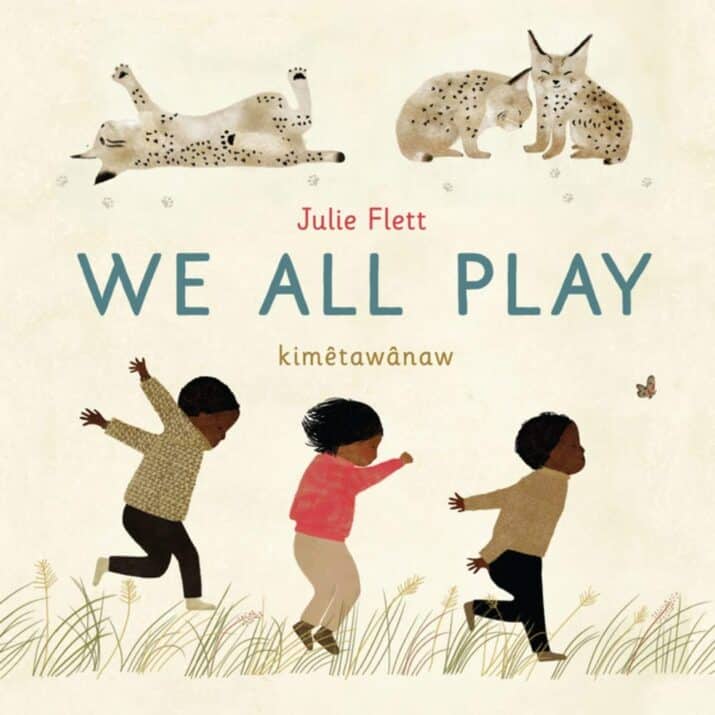
We All Play by Julie Flett
CREE
See the similarities between humans and animals! Simple sentences show animals in playful action plus kids doing the same, showing the similarities between animals and humans. “Animals hide and hop // sniff and sneak // and peek and peep. // We play too! kimetawanaw mina.”
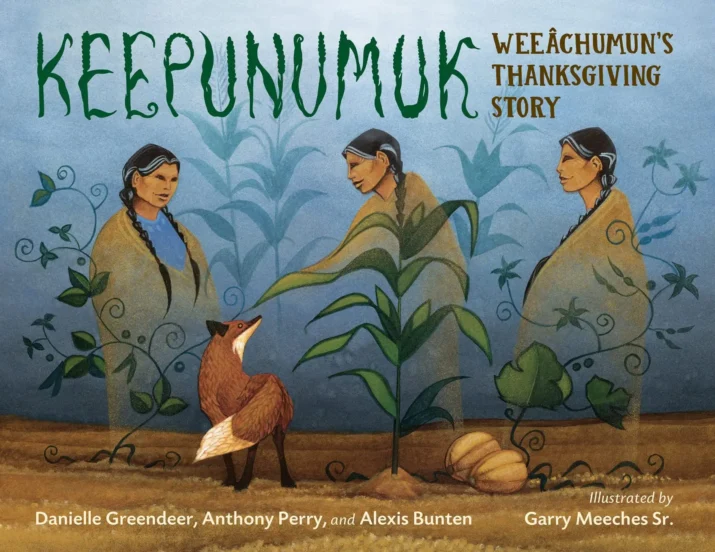
Keepunumuk: Weeâchumun’s Thanksgiving Story by Danielle Greendeer, Anthony Perry, and Alexis Bunten, illustrated by Garry Meeches Sr.
WAMPANOAG
Learn the story of Weeachumun (corn) and the first Thanksgiving from the Wampanoag perspective, and how they helped the Pilgrims who didn’t understand or respect Weeachumun. But Weeachumun told the First Peoples to help the newcomers by bringing them corn and her sisters, crab apples, and chokecherries, and help them learn to fish. Many First Peoples consider this day to be a day of mourning, not thanksgiving.

Autumn Peltier, Water Warrior written by Carole Lindstrom, illustrated by Bridget George
ANISHINAABE
Water narrates this tribute about the 7th generation of Indigenous Anishinaabe women fight like Grandma Josephine to protect the water, specifically activist Autumn Peltier, who speaks for the water. Vivid, saturated illustrations and strong, lyrical language.
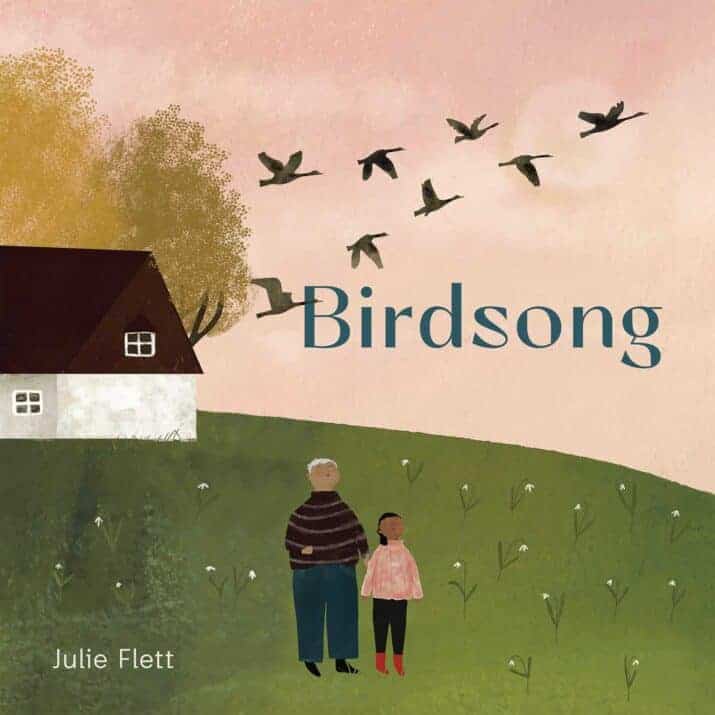
Birdsong by Julie Flett
CREE
Cree words interspersed throughout, and earthy-toned collage illustrations give this book so much richness. Readers will understand that just like the season of nature, our human lives have seasons, too. With her classic simplicity filled with meaning, Flett tells the story of a girl through the seasons of a year. Moving to a new home is hard, but its made easier when the girl, Katherena, befriends her older neighbor, Agnes. They spend time together, becoming good friends. Throughout, Katherena notices the seasons, the moon and the geese, the birds and the snow. One day, it’s time to say goodbye to Agnus whose life is at its end. The girl’s heart is sad and full, powerfully capturing the seasons of life.
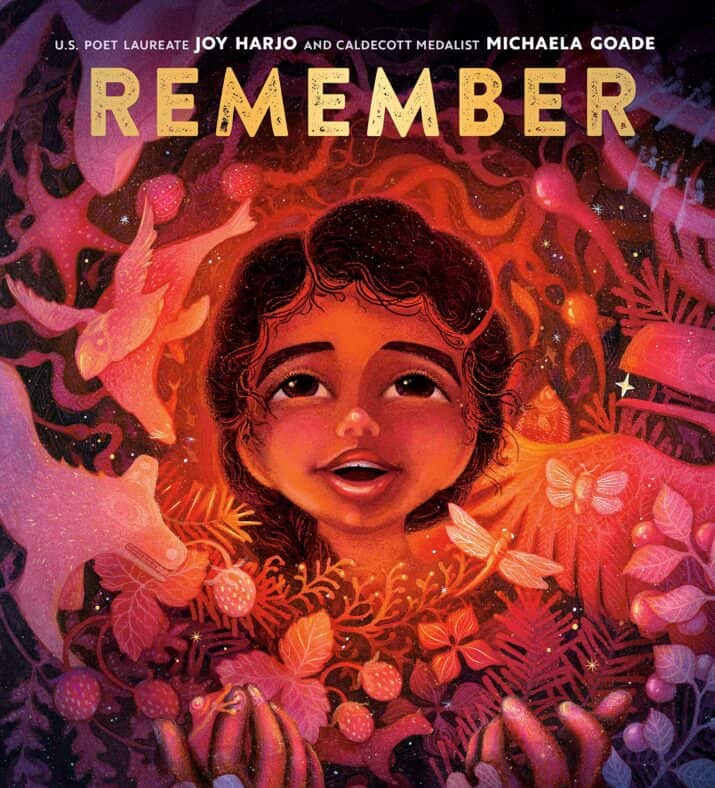
Remember by Joy Harjo
US Poet Laureate Joy Harjo shares her poem with illustrations to help readers remember they’re connected to each other and the Earth. She says to remember the alive poems and the motion of growing. Each page’s illustrated scene pops off the page in brilliant color and detail.
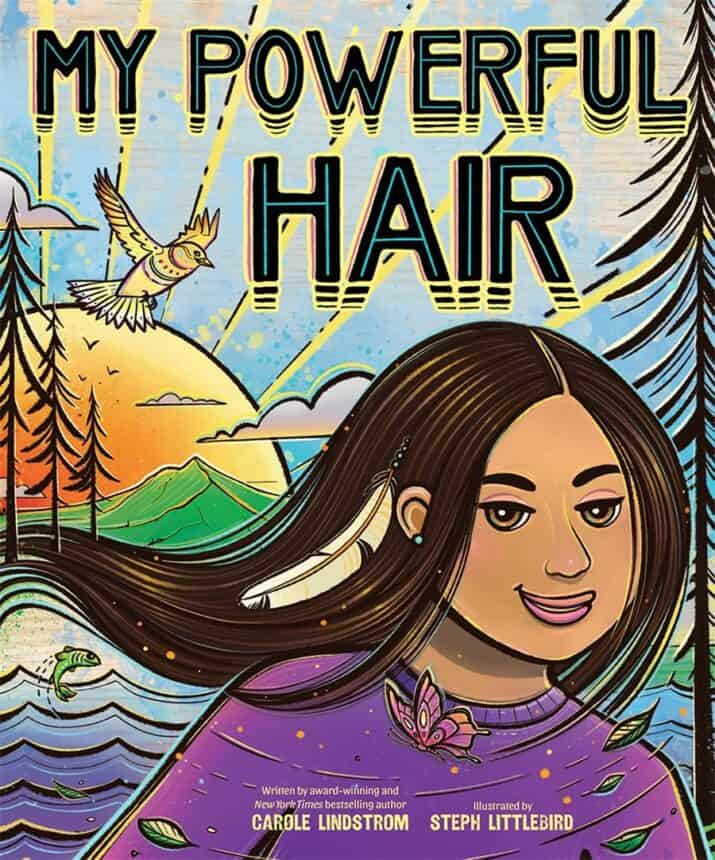
My Powerful Hair by Carole Lindstrom, illustrated by Steph Littlebird
This little girl can’t wait to grow her hair long, especially since her mom and grandma couldn’t. Hair is important. It’s memory, strength, and connection to Mother Earth. The girl shares memories that live in her hair — like her brother’s birth and her cousins teaching her to make moccasins. Glorious, vibrant illustrations show the girl’s life with short and long hair, her family, and her memories, even the sad ones like her grandfather’s death. This is an empowering celebration of the importance of hair.
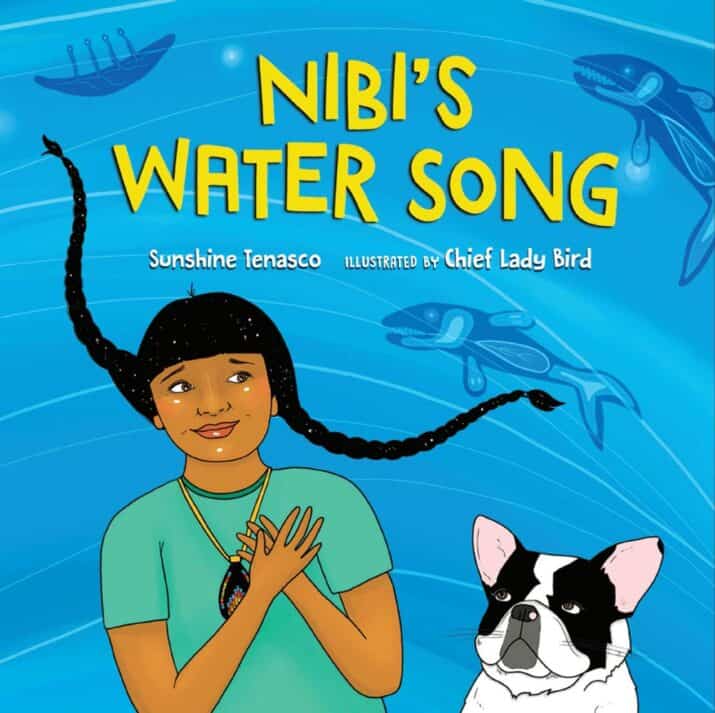
Nibi’s Water Song by Sunshine Tenasco, illustrated by Chief Lady Bird
FIRST NATIONS / KITIGAN ZIBI
Nibi is thirsty, but she doesn’t have clean water to drink! She visits a different neighborhood and asks for water. She searches and searches, then advocates for cleaner water. Kids will understand thirst and feel empathy and concern when they learn about this real problem that some indigenous communities continue to face– the need for potable water.
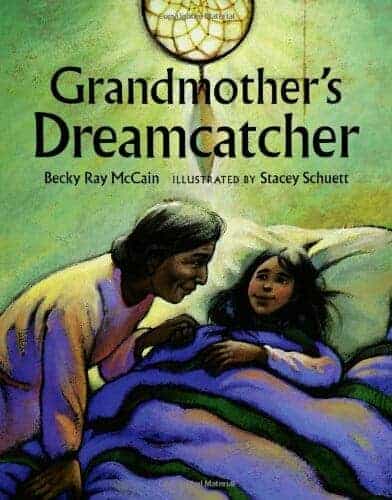
Grandmother’s Dreamcatcher by Becky Ray McCain, illustrated by Stacey Schuett
CHIPPEWA
Kimmy’s dad and mom are in Chicago while Kimmy stays with her grandmother. Her grandmother teaches Kimmy about dreamcatchers to help her keep away bad dreams. Relatable and comforting, this story shows one way to help with separation anxiety.
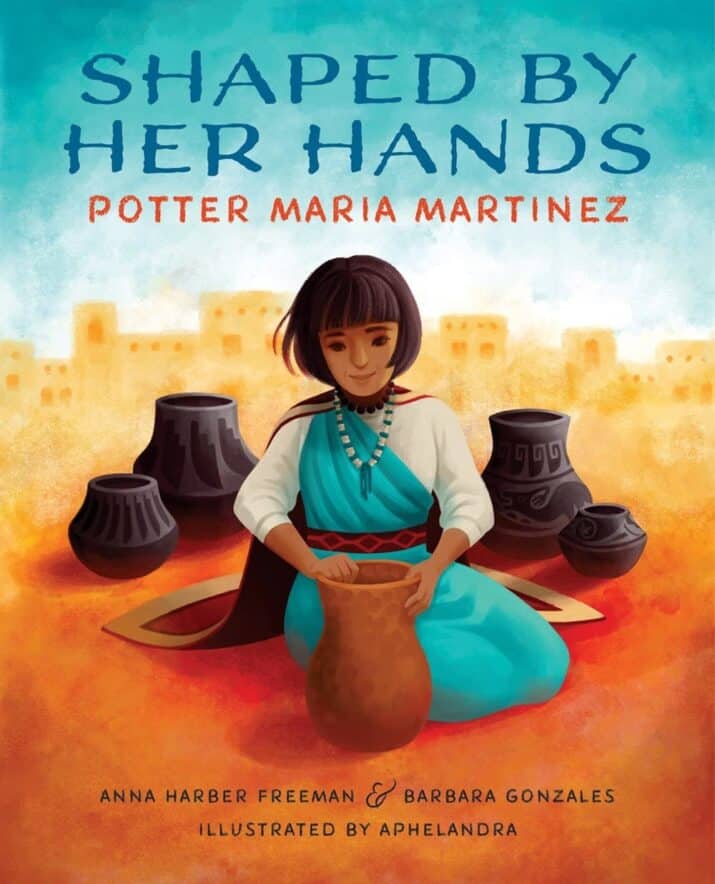
Shaped by Her Hands Potter Maria Martinez by Anna Harber Freeman and Barbara Gonzales, illustrated by Aphelandra
SAN ILDEFONSO PUEBLO
Maria learns century-old Tewa pottery from her aunt. She uses water, clay, and volcanic ash which she rolls into coils to make bowls. She also figures out how to make black pottery. She and her husband work together to sell pots and teach others. It’s a beautifully-written, inspiring story.
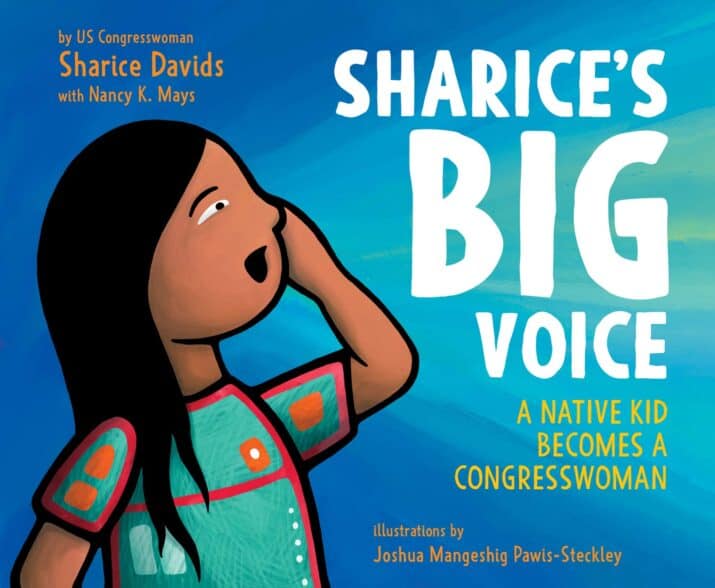
Sharice’s Big Voice A Native Kid Becomes a Congresswoman by US Congresswoman Sharice Davids with Nancy K. Mays, illustrations by Joshua Mangeshig Pawis-Steckley
HO-CHUNK
Narrated in first person, Sharice shares how she learned to listen to others and explains her passion for serving her community, starting with little things to big things like working in Congress. Beautiful colorful illustrations with vibrant cobalt blue backgrounds help this biography stand out among the rest.
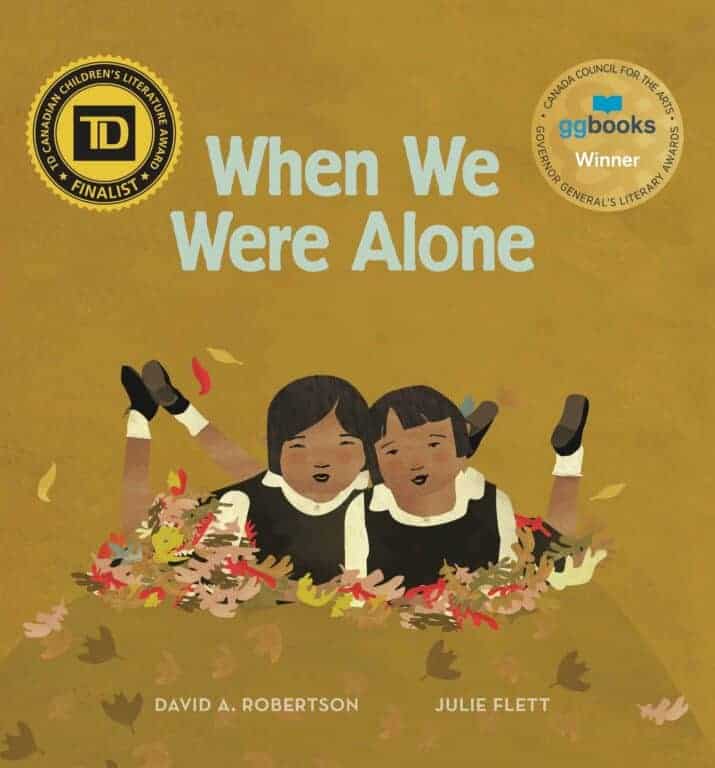
When We Were Alone by David A. Robertson, illustrated by Julie Flett
CREE
Narrated in a gentle way that children can understand, you’ll read about when the girl’s grandma (Nókom) had to live at a residential school where her culture wasn’t permitted…This is why, she tells her granddaughter, the grandmother chooses to wear so many colors, have long hair, speak Cree, and spend so much time with her family. Beautifully illustrated, this story shares information in a way that is truthful about the past yet focused on the present. It’s also a celebration of curiosity and a grandparent-grandchild relationship.
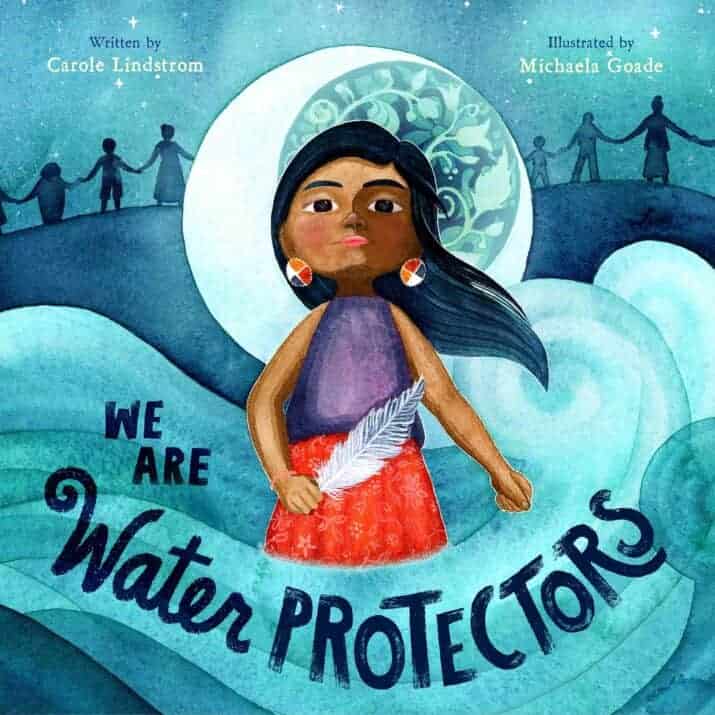
We Are the Water Protectors by Carole Lindstrom, illustrated by Michaela Goade
Narrated from the point of view of Indigenous Peoples, a black snake threatens the Earth’s water with poison. “We are the stewards of the Earth,” cries the narrator sharing a pro-Earth stance to fight for the plants and animals who can’t fight for themselves. Amazingly beautiful illustrations!

Buffalo Wild by Deidre Havrelock, illustrated by Azby Whitecalf
One night, Declan finds a way to release the buffaloes in the stars back onto the prairie where he lives…but it’s too many, and they’re destructive, so he asks Creator for help. Creator lets a few Buffalo stay behind and returns the rest to the sky. Playful purple and pink illustrations.
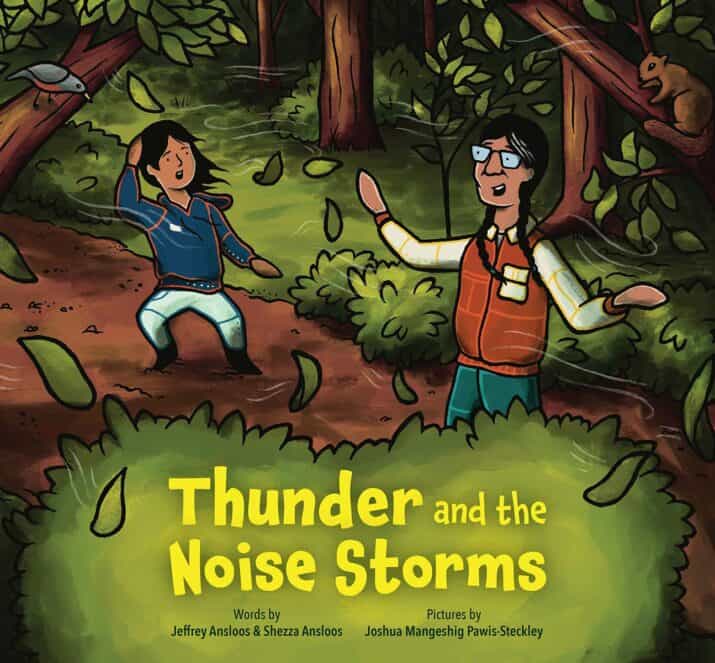
Thunder and the Noise Storms by Jeffrey Ansloos and Sheeza Ansloos, illustrated by Joshua Mangeshig Pawis-Steckley
CREE
At school, it’s too noisy for Thunder, it makes him feel awful. His Mosum (grandfather) takes him for a walk and suggests that Thunder listens with wonder to the quiet of water, wind, trees, birds, and river. Thunder walks slowly, gets still, breathes, and listens with his heart. This practice helps when he returns back to school. Now he listens to his heart and ignores the other noises.
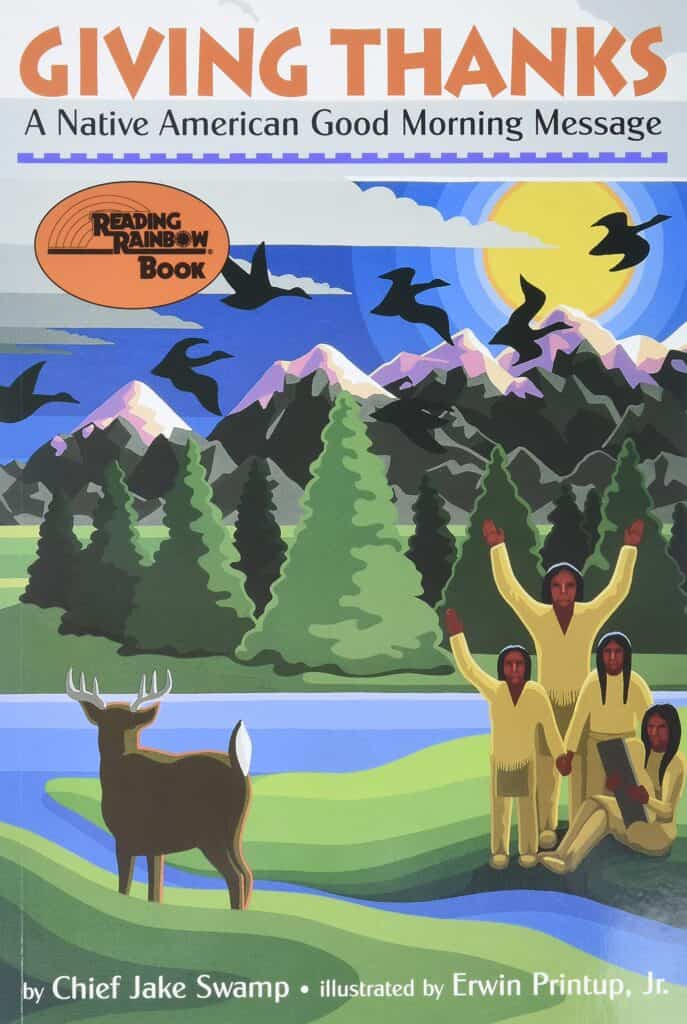
Giving Thanks: A Native American Good Morning Message by Chief Jake Swamp
A simple but beautiful message of thankfulness that is still used in the Six Nations even today at ceremonial gatherings.
Historical Fiction Native American Books to Read
Stolen Words by Melanie Florence
When I Was Eight by Margaret Pikiak-Fenton
Buffalo Bird Girl by S.D. Nelson
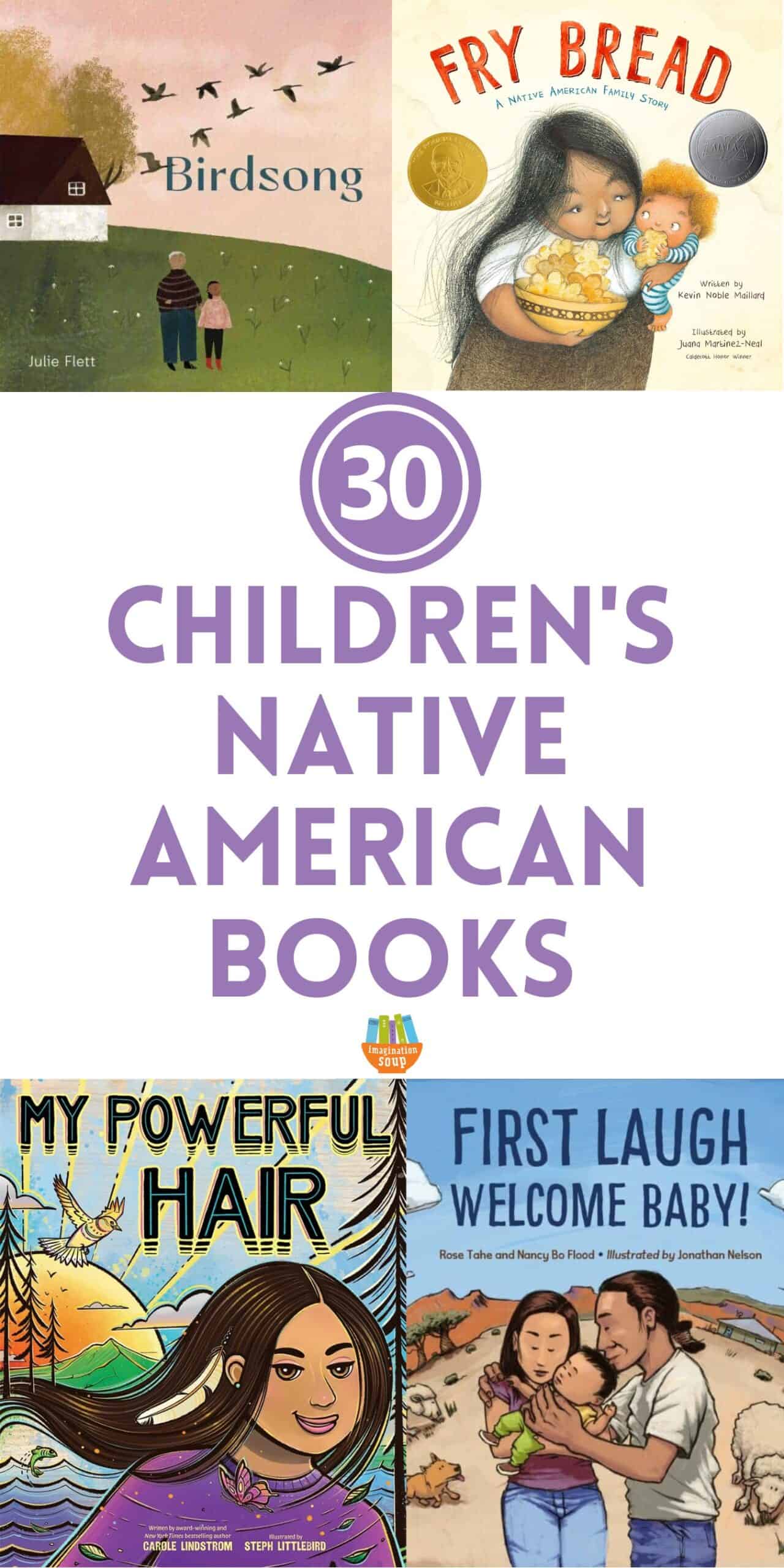
You Might Also Like:
Chapter, Middle Grade, YA Books for Native American / Indigenous Heritage Month

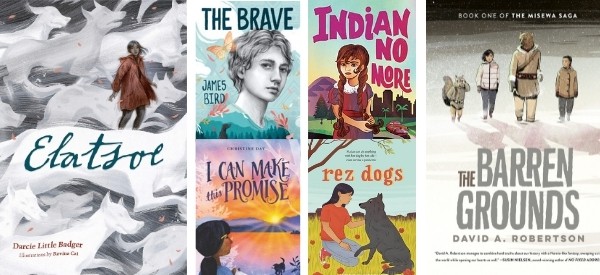
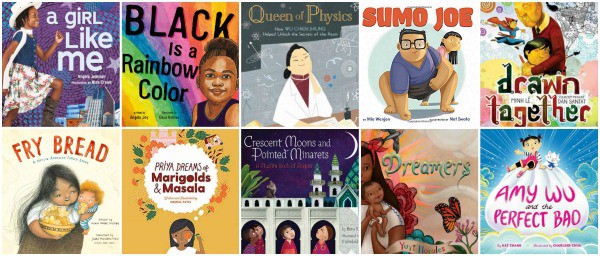
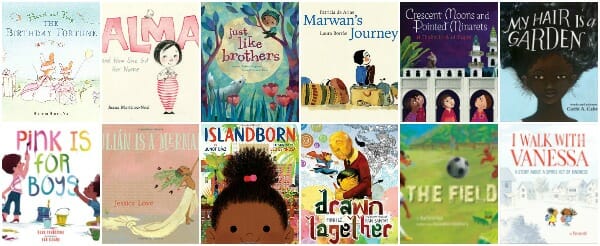
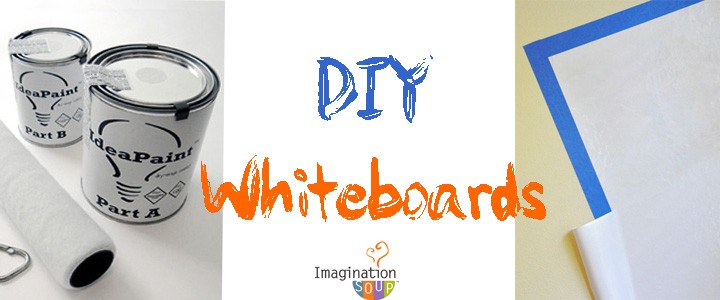

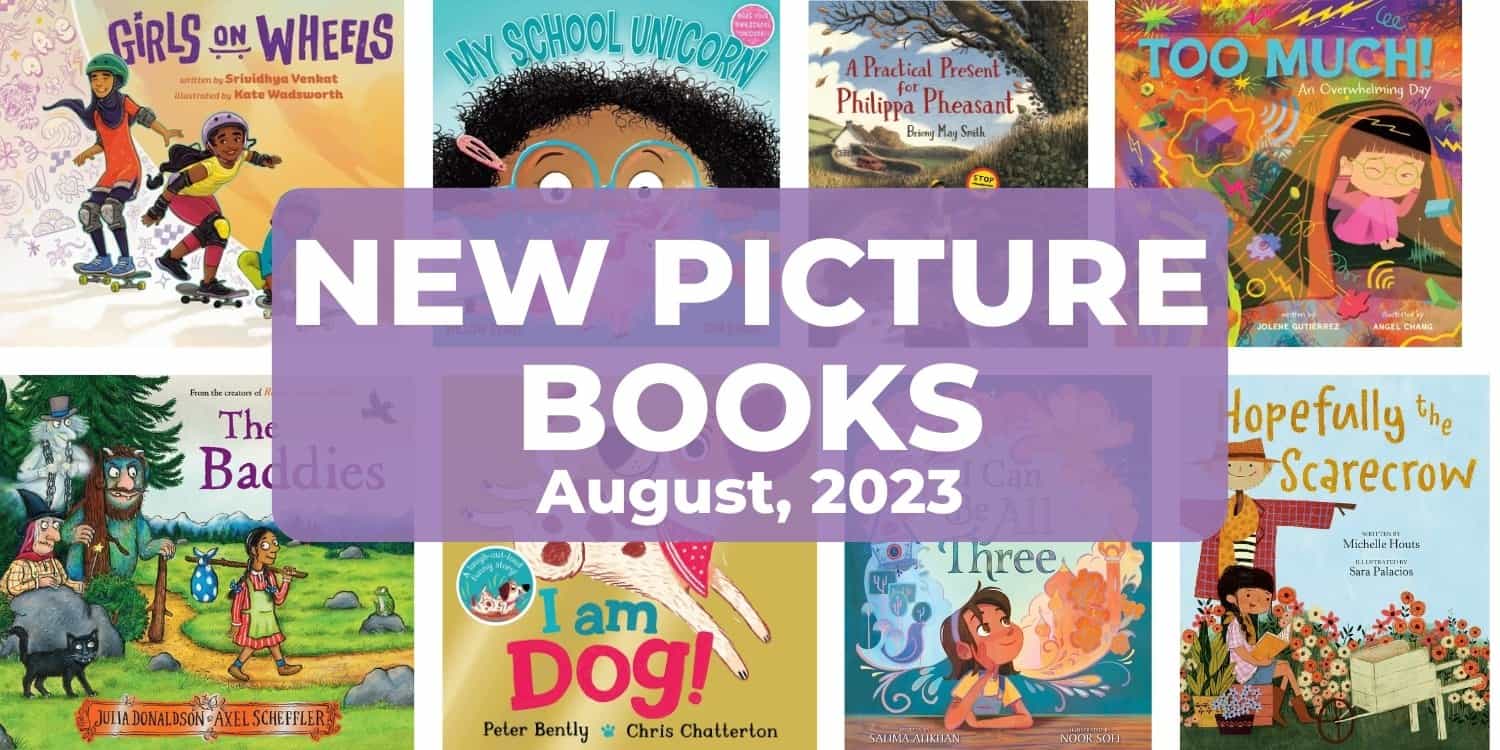
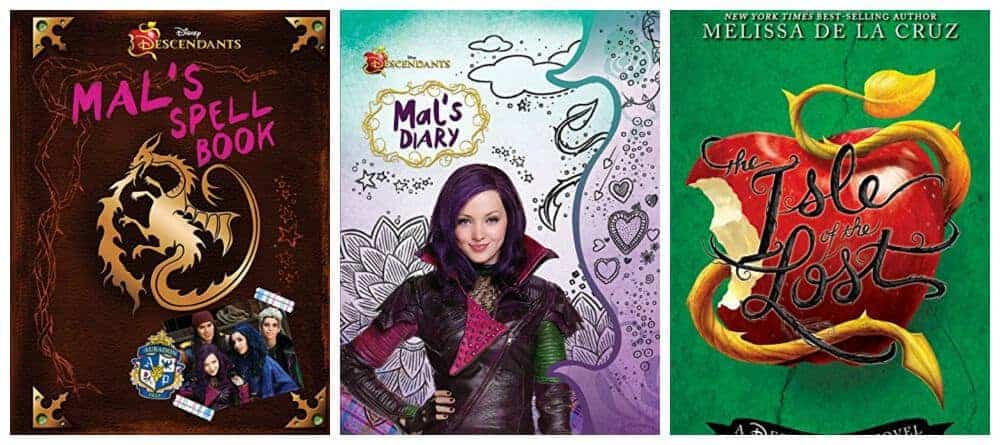
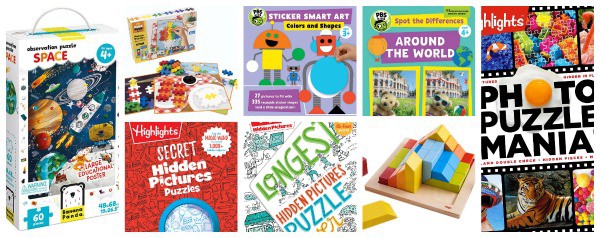

Please consider including this recently published book, SHAPED BY HER HANDS: POTTER MARIA MARTINEZ, co-authored by her great grand-daughter and myself, and published by Albert Whitman & Company. Thank you!
Anna, Thank you for writing this book and for the suggestion! I will run out to get it!
Hi! Thanks for this post. I’m looking for books to share with my class during Indigenous Peoples Month.
One suggestion, in your description of ‘When We Were Alone’, consider changing your wording from boarding school to residential school.
Thank you for catching that mistake, Hayley!